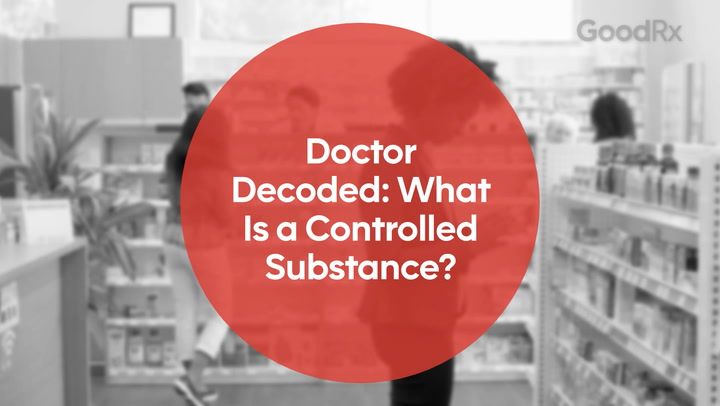
Alcohol, Muscle Relaxers, and More: 9 Suboxone Interactions to Watch for
Key takeaways:
Suboxone (buprenorphine / naloxone) can interact with several medications and substances. This includes alcohol, benzodiazepines like alprazolam (Xanax), and muscle relaxers like tizanidine (Zanaflex).
Some medications change how fast your liver breaks down Suboxone. This can cause more side effects or reduced effectiveness. Examples of medications that interact with Suboxone in this way include clarithromycin (Biaxin XL), ciprofloxacin (Cipro), and Paxlovid (nirmatrelovir / ritonavir).
Give your healthcare team an updated list of all your medications before starting Suboxone. Ask them to check for interactions. Additionally, make sure all healthcare professionals you work with know that you take Suboxone.
Table of contents

If you or a loved one is struggling with opioid use disorder (OUD), finding the right treatment is key. Suboxone (buprenorphine / naloxone) is a first-choice medication for treating OUD. But like all medications, it has risks to be aware of. Knowing what to watch for, such as drug interactions and side effects, can help keep you safe.
Suboxone is a partial opioid agonist. This means it has actions similar to an opioid, but it’s not as strong and doesn’t cause as intense of side effects in most cases. However, it can still cause many of the same types of drug interactions that typical opioids do. Below, you’ll find information on nine Suboxone interactions and what you can do about them.
Good to know: Suboxone comes as a sublingual film. It’s also available as a sublingual tablet called Zubsolv. These products are both meant to be dissolved under the tongue. Regardless of which form you use, they both have the same drug interactions.
Suboxone interactions at a glance
Below is a list of medications that can interact with Suboxone. This isn’t a complete list of every possible interaction, though. So make sure to share an updated medication list with your healthcare team before starting Suboxone. Include any prescription and over-the-counter (OTC) products you take. This will help them screen for buprenorphine interactions.
| Medication | Examples | Interaction summary |
|---|---|---|
| Alcohol | Beer, wine, spirits | Increased drowsiness, dizziness, and slowed breathing |
| Benzodiazepines | Alprazolam (Xanax), diazepam (Valium), lorazepam (Ativan) | |
| Sleep medications | Zolpidem (Ambien, Edluar, and ZolpiMist) and diphenhydramine (ZzzQuil) | |
| Muscle relaxers | Carisoprodol (Soma) and cyclobenzaprine (Amrix) | |
| Non-nucleoside reverse transcriptase inhibitors (NNRTIs) | Medications containing efavirenz, etravirine (Intelence), nevirapine | Affects buprenorphine blood levels, making side effects more likely or makes buprenorphine less effective |
| Antibiotics | Erythromycin (Ery-tab) and rifampin (Rifadin) | |
| Oral azole antifungals | Fluconazole, ketoconazole, itraconazole | Increases buprenorphine blood levels, making side effects more likely |
| Protease inhibitors | Medications containing atazanavir (Reyataz), cobicistat (Tybost), ritonavir (Norvir) | |
| COVID-19 medications | Paxlovid (nirmatrelovir / ritonavir) | |
| Seizure medications | Carbamazepine (Tegretol) and phenytoin (Dilantin, Phenytek) | Decreases buprenorphine blood levels, making it less effective |
| Antidepressants | Amitriptyline and escitalopram (Lexapro) | Increased risk of serotonin syndrome |
| Triptans | Rizatriptan (Maxalt), sumatriptan (Imitrex) | |
| OTC supplements | St John’s wort | |
| Diuretics | Furosemide (Lasix), hydrochlorothiazide (Microzide) | Reduced effectiveness of diuretics |
| Anticholinergics | Benztropine (Cogentin), oxybutynin (Ditropan), scopolamine (Transderm Scop) | Increased side effects such as constipation and urinary retention |
1. Alcohol
Alcohol interacts with many medications, including Suboxone. Both alcohol and Suboxone have sedative-like properties. They both can increase your risk of slowed breathing and overdose.
There’s no safe amount of alcohol to combine with Suboxone. What’s more, avoiding alcohol is best if you’re receiving treatment for OUD, even if you’re not taking Suboxone. Be honest with your prescriber about whether you drink alcohol before starting Suboxone or other OUD treatments. They can help you come up with a plan to stop drinking if needed.
Prescription Savings Are Just the Beginning
See what other benefits you qualify for—from cashback cards to cheaper insurance.

2. Benzodiazepines, such as lorazepam
Benzodiazepines are considered sedative medications. They’re prescribed for many conditions, including anxiety, panic disorder, and seizures. Common benzodiazepines include alprazolam, lorazepam, and diazepam.
Taking benzodiazepines with Suboxone has risks because they have similar side effects. Both can cause drowsiness and dizziness, which can be more intense if you take them together. More seriously, the combination may increase your risk of overdose and death. This can happen even if you take both medications exactly as prescribed. But it’s more likely to happen if you use too much of either medication or take them in a way different than prescribed.
An overdose is a medical emergency. If you suspect someone is having an overdose, call 911. If you have naloxone (Narcan, Zimhi) or nalmefene (Opvee, Zurnai) on hand, administer them right away and then call 911. These medications temporarily reverse the effects of an opioid overdose.
It’s best to avoid combining Suboxone and benzodiazepines. If you’re taking a benzodiazepine, your healthcare team may be able to find an alternative for you that does not have these interactions.
3. Sleep medications, such as Ambien
Medications used to treat insomnia (trouble sleeping) can cause drowsiness and dizziness. When combined with Suboxone, the drowsiness may be more severe. This can lead to falls and injuries, especially in older adults.
Several groups of medications help with sleep. Examples include:
Z-drugs, such as zolpidem
Antidepressants, such as doxepin (Silenor)
Some OTC antihistamines, such as diphenhydramine
Orexin receptor antagonists, such as Belsomra (suvorexant)
Melatonin and the melatonin receptor agonist ramelteon (Rozerem)
If you take medication to help you sleep, talk to your prescriber before taking it with Suboxone. They can help you weigh the risks and benefits. Suboxone can sometimes cause sleep issues, so be sure to let your prescriber know if you start to have trouble sleeping.
4. Muscle relaxers, such as carisoprodol
Muscle relaxers are prescribed to treat muscle pain and spasms caused by injuries. Common examples include carisoprodol, cyclobenzaprine, and tizanidine (Zanaflex). Like Suboxone, muscle relaxers can cause drowsiness and dizziness. So it’s best to avoid these medications if you take Suboxone.
Other muscle pain and spasm treatments may be safer to try if you take Suboxone. For example, heat or cold therapy may help. OTC pain relievers like acetaminophen (Tylenol) and ibuprofen (Advil, Motrin) are also options. Topical creams, such as diclofenac (Voltaren Arthritis Pain), may also help. However, these medications aren’t safe for everyone. So check with your prescriber first.
Are medications recommended for opioid use disorder treatment? Yes, find out why medications are the mainstay of treatment for opioid use disorder.
How does buprenorphine work? Learn how this unique medication treats opioid use disorder and chronic pain.
What are common buprenorphine side effects? Buprenorphine can cause dizziness, drowsiness, and more. Learn what to watch for.
5. Some antibiotics, such as ciprofloxacin
Certain antibiotic classes can interact with Suboxone, making side effects more likely. This includes macrolide antibiotics, such as clarithromycin and erythromycin. Another antibiotic, called ciprofloxacin (Cipro), can also interact with Suboxone. It’s part of the fluoroquinolone antibiotic class. These antibiotics block enzymes (proteins) in the liver that metabolize (break down) Suboxone. This may lead to higher Suboxone levels and increased risk of side effects.
On the other hand, rifampin is an antibiotic that speeds up Suboxone metabolism. This can lead to lower Suboxone levels and reduced effectiveness.
Be sure that anyone who prescribes you medications knows you’re taking Suboxone. If they recommend an antibiotic, ask them to check for a drug interaction with Suboxone. If there is one, they may be able to choose another type of antibiotic to treat your infection. Or they may recommend adjusting your Suboxone dose while taking the antibiotic.
6. Some antifungals, such as fluconazole
Antifungal medications treat fungal infections such as thrush and skin infections. Not all antifungals interact with Suboxone. But an antifungal class called azoles can. Examples of oral azoles that may interact with Suboxone include fluconazole, itraconazole, and ketoconazole.
These medications block enzymes that metabolize Suboxone. This can increase your Suboxone levels and raise the risk of side effects. So make sure anyone who is prescribing you medication knows that you take Suboxone. Ask them to check for Suboxone interactions before recommending an antifungal medication.
7. Some seizure medications, such as carbamazepine
Some seizure medications can interact with Suboxone. Examples include carbamazepine and phenytoin.
These medications increase how quickly your liver metabolizes Suboxone. This can lead to low Suboxone levels, making it less effective at treating OUD. It may also cause opioid withdrawal symptoms.
If a prescriber recommends starting a seizure medication, tell them you take Suboxone. They may ask to talk to your Suboxone prescriber, too. They can check for interactions before choosing a seizure medication.
If you need carbamazepine or phenytoin, you may need a higher Suboxone dose. But don’t make any changes without talking to your healthcare team first.
8. Antivirals, such as ritonavir
Not all antivirals interact with Suboxone. However, two specific antiviral classes might. They're called protease inhibitors and non-nucleoside reverse transcriptase inhibitors (NNRTIs).
Protease inhibitors block the enzymes that metabolize Suboxone. This can increase Suboxone levels, putting you at greater risk of side effects. Examples of protease inhibitors that may cause this interaction include atazanavir and ritonavir-containing medications. This includes Paxlovid (nirmatrelovir / ritonavir), a medication used to treat COVID-19 infections.
On the other hand, NNRTIs have varying effects. Some block enzymes that metabolize Suboxone. And others speed up these enzymes. This can result in Suboxone levels that are too high or too low. So they could increase your risk of side effects or make the medication less effective. Examples of NNRTIs include nevirapine and efavirenz.
Be sure your entire healthcare team knows what medications you are taking. They will help to manage your Suboxone therapy if you also need an antiviral medication.
9. Medications that increase serotonin, such as trazodone
Suboxone and some other medications increase a chemical in the body called serotonin. When multiple serotonin-boosting medications are combined, serotonin levels can rise too high. This may lead to serotonin syndrome, a rare but possibly severe condition. Symptoms can range from mild to life-threatening, and include fever, confusion, and seizures.
Medications that increase serotonin include:
Selective serotonin inhibitors (SSRIs), such as escitalopram
Tricyclic antidepressants, such as amitriptyline
Monoamine oxidase inhibitors (MAOIs), such as phenelzine (Nardil)
Triptans, such as sumatriptan
Atypical antidepressants, such as trazodone
OTC supplements, such as St. John’s wort
Ask your pharmacist whether you take any medications that increase serotonin levels. If you take several that have this effect, your prescriber may adjust your medication regimen. For example, MAOIs and Suboxone generally shouldn’t be taken within two weeks of each other.
The bottom line
Combining Suboxone (buprenorphine / naloxone) with certain medications can cause drug interactions. Examples of medications that interact with Suboxone include lorazepam (Ativan), cyclobenzaprine (Amrix), and zolpidem (Ambien). Other suboxone interactions can occur with antibiotics like ciprofloxacin (Cipro) and antifungals like fluconazole (Diflucan).
Give your healthcare team an updated medication list before starting Suboxone. This will help them check for interactions. Include any over-the-counter and prescription medications you take. And make sure any healthcare professional you talk to is aware you’re taking Suboxone. They’ll review for possible interactions and help to keep you safe while taking Suboxone.
Why trust our experts?



References
Indivior Inc. (2023). Suboxone- buprenorphine hydrochloride, naloxone hydrochloride film, soluble [package insert].
Witkiewitz, K., et al. (2018). Alcohol and opioid use, co-use, and chronic pain in the context of the opioid epidemic: A critical review. Alcoholism, Clinical and Experimental Research.
Was this page helpful?
Related Articles
Browse medications
View AllResearch prescriptions and over-the-counter medications from A to Z, compare drug prices, and start saving.















